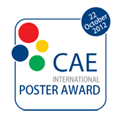The complex phenomenon of metals and alloys casting solidification, that is the transformation from liquid to solid phase, can present several problems depending on materials and processes. The use of inadequate moulding materials and casting parameters induces in final product defects such as shrinkage, porosity, hot tears, etc. In this framework, a proper design of gating system has the potential to reduce or eliminate these problems.
For many years, the foundrymen-, toll makers- and casting designers- experience has been the only effective support in designing moulds and planning production run.
Recently, the use of computer simulation techniques has allowed the prediction of casting solidification to overcome the above mentioned limits. As a matter of fact, this powerful tool can be effectively used to avoid gating and feeding problems, predict casting quality, aid mold design, reduce costs and decrease time necessary to the optimisation of production cicle.
In this context, this paper aims at studying the iron casting solidification and the optimisation of the design parameters by means of numerical simulations. In particular, the aim of computer modeling has been the prediction of solidification pattern, indicating where shrinkage cavities and associated defect could arise, and simulate solidification with the casting system in different positions, in order to select the optimal position. To this end, the software MAGMASOFT has been used to simulate the solidification of simple iron castings with a ring shape, obtained by means of shell moulding processes with different gating systems. For each different gating system geometry, that involves a different filling, a analysis of the cast alloy solidification behaviour has been performed by means of several solidification criteria such as the gradient, cooling rate, cooling from liquidus to solidus temperature and feeding ones.
|




